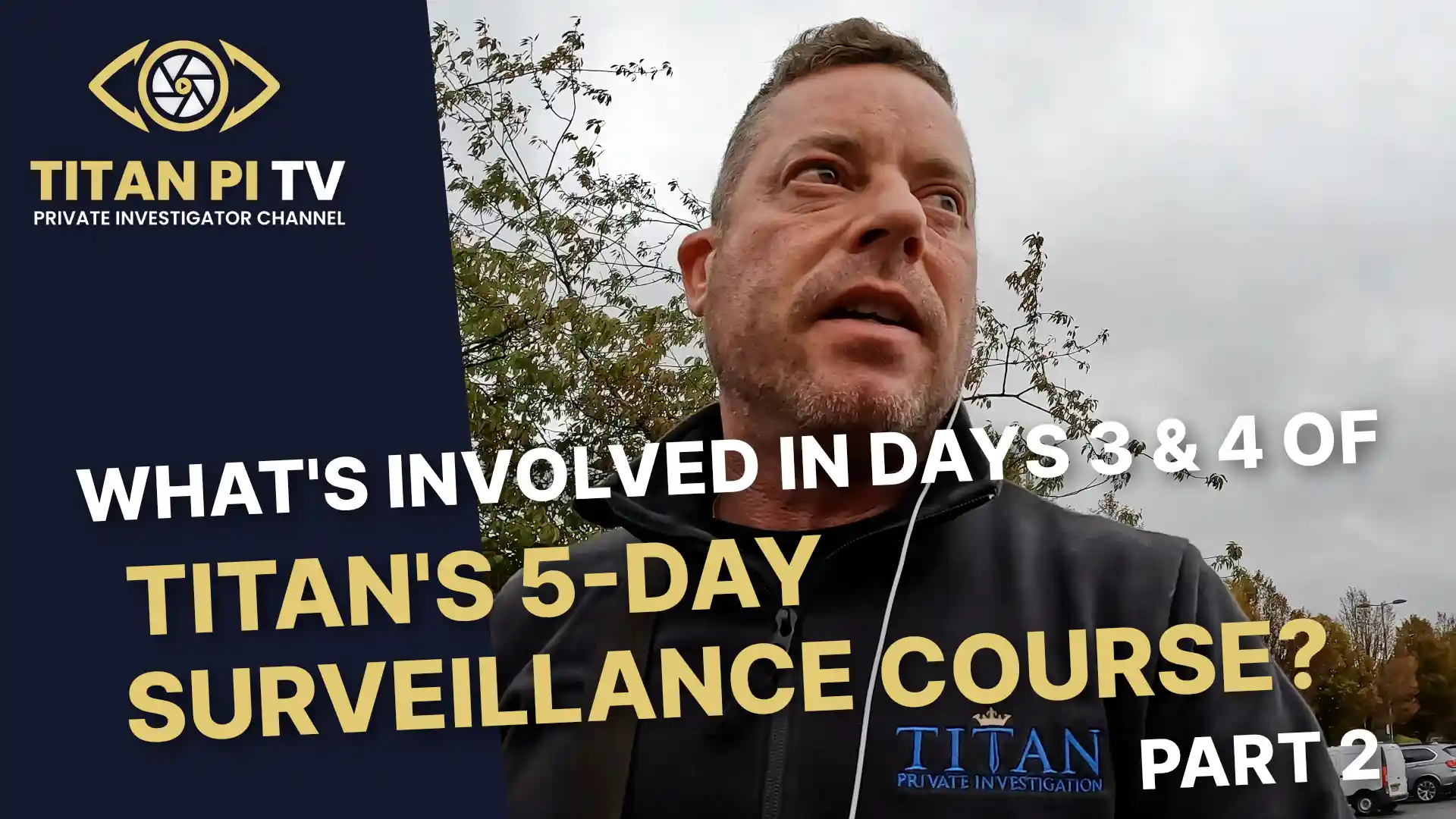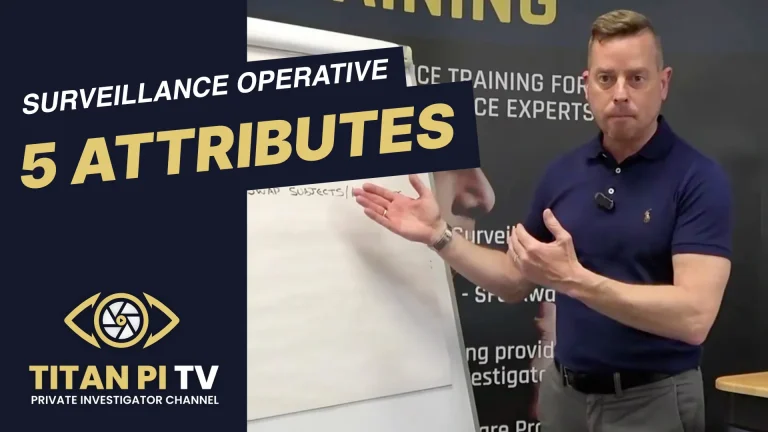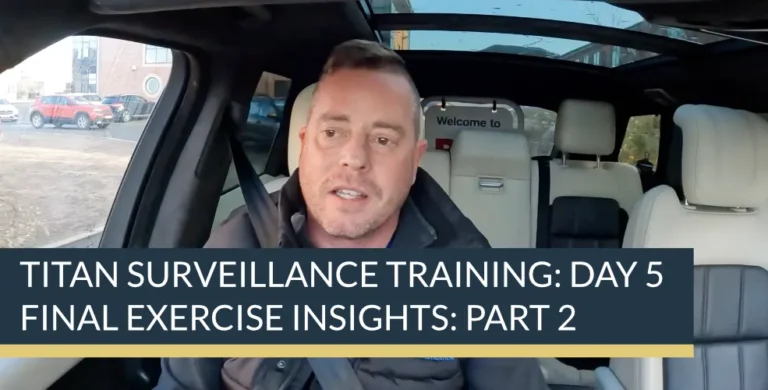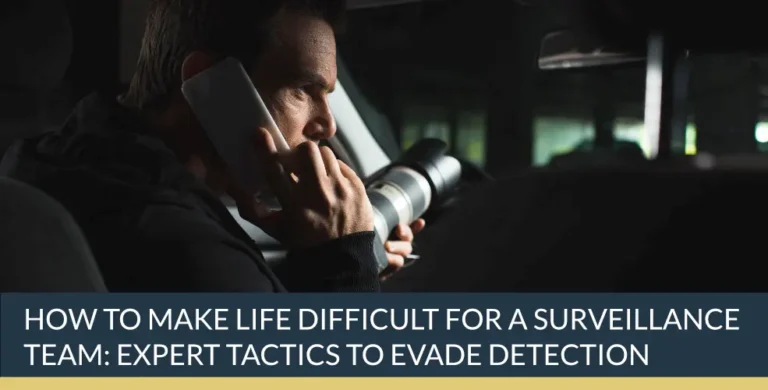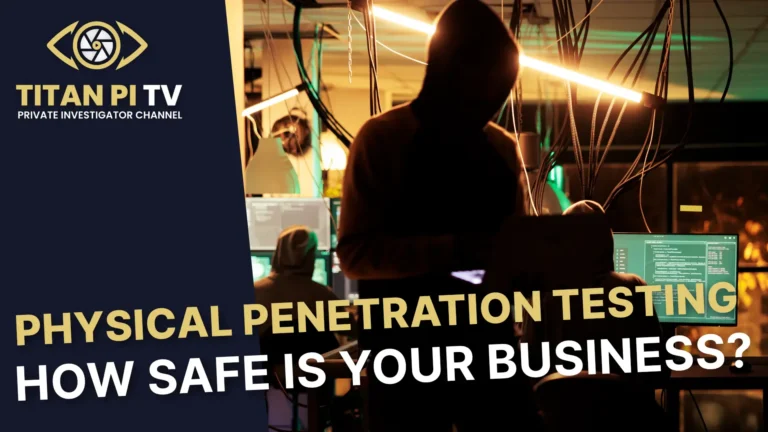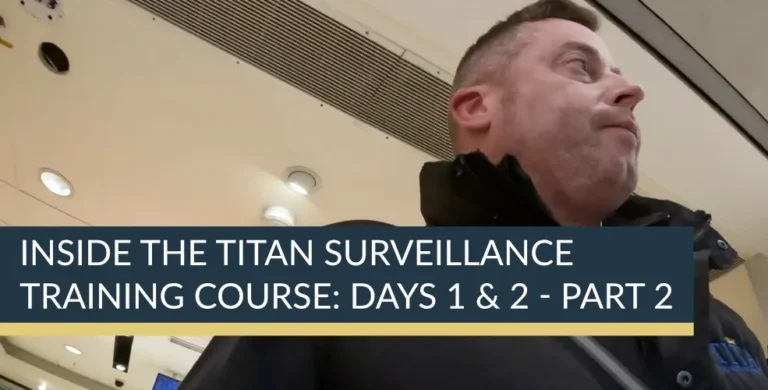What’s involved in days 3 and 4 of Titan’s 5-day Surveillance Course? – Part 2
Inside Titan’s Surveillance Course: Days Three and Four Uncovered
Titan PI TV’s latest YouTube episode with channel host Simon Henson dives into the heart of Days 3 and 4 of Titan’s renowned Five‑Day Surveillance Course. Building on the foundations laid earlier in the week, this instalment (Part 2) tracks the trainees as they move from theory to the pressure cooker of real‑world application: motorway work, service station procedures, multi‑storey car parks, department stores, and complex urban foot surveillance. It’s a packed two days designed to test judgement, precision, communications discipline, and team cohesion—under conditions that mirror live operations.
Across fast‑moving carriageways, labyrinthine shopping centres and tight car parks, the class is put through scenarios that demand both tactical awareness and procedural adherence. The mantra: learn to anticipate, control, and adapt—covertly and professionally.
Motorway surveillance: disciplined commentary and decisive positioning
The episode opens on the motorway: the team is four vehicles strong, and each has time “on the mic”, providing live commentary. For uninitiated listeners, it’s a shock to the system—commentary protocols on motorways are remarkably structured. Every sign, every board, every marker matters. As Simon explains, each roadside feature is treated as a reference “board”—from tourist information signs and traffic information boards, to half‑mile markers and countdown markers. The objective is clarity and consistency in communications so that every operative shares a precise spatial picture without ambiguity.
In motorway surveillance, subjects commit or they don’t—“committed” if they stay on; otherwise “left, left, left” or “right, right, right” through splits, depending on carriageway options. The team’s discipline is evident as they move into a live services exercise, applying the morning’s classroom input on service station procedures.
Services procedures: control the exits, maintain the sterile box
Service stations are classic choke points in surveillance. They offer cover, amenities, and multiple exit opportunities—including unnatural routes such as bridges or local‑road loops that can dislocate the team’s coverage. Titan’s doctrine is crystal clear:
- Vehicle 1 (Eyeball): Enters with the subject, “lands” the subject vehicle, and deploys a foot unit to gain visual control of any subject movement.
- Vehicle 2 (Backup/Natural Exit): Covers the natural exit—typically where the fuel station sits and where the majority of returning traffic re‑joins the motorway.
- Vehicle 3 (Unnatural Exit): Controls the unnatural exit—this may lead to a nearby village or a bridge to the opposite carriageway, mitigating the risk of the subject switching sides or transferring to another vehicle.
- Vehicle 4 (Flexible Asset): A luxury on this course, the fourth vehicle floats—ready to support foot deployments, cover blind spots, or respond to unfolding behaviour.
At Tibshelf Services, the team executes the plan confidently. The subject departs via the natural exit, past one of the team’s vehicles positioned in a sterile plot, and re‑joins the M1 northbound. The convoy flows back into covert pursuit, commentary tight and concise as they set up for the next phase.
Roundabout work: the art of anticipation
From services to complex road junctions, the trainees hit a series of large roundabouts—settings that demand rapid decision‑making and clean comms. The commentary protocol is consistent: lane positions, indications (or lack of), and exits are called crisply—“Subject middle lane… towards the A619… cancel that…”—with mid‑flow corrections delivered cleanly so the team can adapt without confusion.
What’s at stake here isn’t just following the subject; it’s orchestrating which team vehicle is best placed to take the eyeball at each exit without becoming conspicuous or risking a compromise. When the subject takes the third exit unexpectedly, one operative adjusts on the fly—“I’m going to have to go with him”—while the rest of the team re‑balances coverage. It’s a small moment that illustrates a big principle: stick to procedure, but be ready to flex as the picture changes.
Multi‑storey car park operations: containment and control
The morning’s second classroom block—car park procedure—gets an immediate field test. Multi‑storey car parks are surveillance minefields: tight spaces, line‑of‑sight challenges, and limited manoeuvrability. The team “sticks the procedure on”—locates the subject vehicle, sets a sterile boundary, and deploys foot operatives towards lifts and stairs leading to shops. The aim is to control flow paths: cover the likely movements, and be ready to hand over between vehicle crews and foot teams without gaps.
In Chesterfield, the team completes a circuit: a careful phase of foot surveillance through the town and a return to the multi‑storey, where the procedure holds up under pressure. Confidence builds—not just in tactics, but in the trust between operatives.
Department store and sterile‑area drills: Meadowhall masterclass
From Chesterfield, the convoy pushes up the motorway to Junction 34 for Meadowhall—a vast shopping complex with department stores, multiple entries/exits, and a sea of environmental detail that can overwhelm the unprepared. Titan’s department store procedure focuses on proactive zoning and sterile area creation—operatives define and maintain an area that’s free of surveillance assets, used to reset and manage contact as the subject moves through shops and concourses.
The team practices:
- Department store protocols: how to enter, position, and hand over inside large retail environments without creating patterns or compromising cover.
- Vino and sterile area techniques: establishing a neutral buffer and managing flow around it.
- Cross‑team communications: handing the eyeball cleanly when the subject changes level, shop, or direction.
These are the sorts of scenarios where experience is everything—sightlines, escalators, exits onto external plazas, and the constant churn of shoppers can kill an operation. The trainees demonstrate that they can keep the subject under control while remaining inconspicuous.
Back to services: repetition to build instinct
Later, at Woodall Services, Simon resets the services protocol—Vehicle 1 in with the subject; Vehicle 2 on the natural exit; Vehicle 3 on the unnatural route; Vehicle 4 flexible. Repetition is no accident. By running services in multiple locations, the course conditions reflexes. Surveillance work rarely goes to a perfect script, but if the structure is ingrained, the team has a stable base from which to improvise.
The episode underscores this point repeatedly: it’s not just knowing what to do—it’s knowing it so well that you can make good decisions under pressure.
Communications: the backbone of covert success
One theme runs like a thread through every scene: disciplined comms. “On the mic” time isn’t a nice‑to‑have—it is training oxygen. Operatives learn to:
- Use standardised language so that every instruction is unambiguous.
- Provide succinct, relevant information—lane position, indications, exit number—without clutter.
- Correct in real time without confusion (“Cancel that—taken the second”).
- Hand over smoothly between vehicles and between vehicle and foot teams.
This commentary culture is what allows multiple moving parts to cooperate covertly while keeping the subject under reliable control.
Motorcycle roles: specialist assets in the surveillance stack
Back at Titan Training HQ for the evening module, the class is introduced to specialist motorcycle roles. While the trainees won’t run a motorcycle on this course, they leave with an understanding of how bikes integrate into a surveillance team: cutting through congestion, maintaining contact in dense urban traffic, and bridging gaps where cars can’t safely follow. Knowing how to work with a bike—how and when to hand over, what information riders need, and how to avoid crowding—broadens a team’s operational options.
Continuous assessment and the road to Day 5
By the end of Day 4, Simon reports that “everything has been delivered”. It’s been a long day—indeed, a long week—and the class is understandably shattered. But the structure of the course means no one goes into the final assessment blind. There’s been continuous evaluation throughout, and each trainee knows where they stand and what’s expected in the culminating exercise on Day 5.
Between now and then, two tasks dominate:
- Rest: “Lots and lots of sleep,” as Simon puts it, to ensure sharpness and good decision‑making under pressure.
- Preparation: The operational order—the briefing document for the final exercise—must be known inside out. In real surveillance, success often hinges on how well the team understands objectives, constraints, and contingencies before the first engine turns.
Why these scenarios matter
The episode makes clear that Titan’s training is built around credible operational realities:
- Motorways and service stations are common touchpoints in genuine investigations.
- Multi‑storey car parks and department stores present high‑risk environments for loss or compromise if procedures aren’t robust.
- Roundabouts, lane discipline, and indication behaviour are not just driving details—they are intelligence cues, and they shape resource positioning.
- Communications discipline is the single most powerful determinant of whether a multi‑asset team functions as one.
By exposing trainees to the friction of real roads and real environments—from Tibshelf to Meadowhall to Woodall—the course strips away abstraction. It’s not about theory in isolation; it’s about applying that theory at speed, with consequences.
A team finding its rhythm
One of the episode’s most striking elements is watching the cohort gel. Early hesitations on the mic turn into crisp calls. The handovers tighten. The sterile plots are set faster. Foot deployments step off with purpose. The luxury of a fourth vehicle is used intelligently rather than indulgently. Each scenario ends not with relief, but with momentum—the mark of a team that’s not just surviving the course, but internalising its lessons.
Day 4 close: tired, tested, and ready
As the sun sets on Day 4 at Titan Training HQ, Simon signs off with a balance of pride and pragmatism. It’s been “very enjoyable, but tiring.” The content is complete and the skillset is in place. The next time the team is on the road, it will be for keeps—one final, assessed exercise that pulls together every component: motorway work, services, urban foot surveillance, structured communications, and agile role‑swapping under pressure.
The episode promises a final update after the assessment—an insight into how a week of hard graft translates into operational performance when it counts.
Key takeaways from Days 3 and 4
- Precision motorway comms: Treat every sign and marker as a reference board. Keep calls short, standardised, and corrective where needed.
- Services mastery: Control the natural and unnatural exits. Land the subject vehicle, deploy foot, and hold the sterile box.
- Roundabout craft: Anticipate exits, position for clean handovers, and avoid conspicuous manoeuvres.
- Car park procedure: Locate, isolate, control. Manage lifts, stairs, and shop access routes with disciplined foot deployments.
- Department store discipline: Use sterile areas, manage levels and entrances, and rotate operatives to prevent patterning.
- Motorcycle integration: Understand when and how bikes augment the stack for contact retention in challenging traffic.
- Continuous assessment: Know your standing, rest properly, and master the operational order before the final exercise.
Watch the episode and follow the series
To see the drills, hear the live commentary, and watch the team in action, head to Titan PI TV on YouTube cahnnel and id you missed Part 1 of “What’s involved in Day 3 & 4 of Titan’s 5‑Day Surveillance Course” you can watch it here. This week’s Part 2, it sets the stage for this intense mid‑week immersion. And keep an eye out for the Day 5 finale—where training meets the ultimate test.
Whether you’re a working investigator polishing your surveillance craft or a newcomer considering formal training, this episode offers a rare window into the standards and structure that define professional covert work in the UK. It’s not glamour; it’s grit, method, and teamwork—executed safely, legally, and with a relentless focus on control.
What’s Next on Titan PI TV?
Titan PI TV continues to grow steadily, with over 2,800 subscribers and counting—a testament to the appetite for straight-talking guidance in a complex field. If you found Henson’s insights useful, subscribe to the channel to catch future episodes. New content drops every Friday at 3:00 pm, offering grounded advice for investigators, agency owners, and professionals who work with them.
Thank you for reading, watching, or listening to this week’s blog post on Titan PI TV. For more expert advice and behind-the-scenes insights, subscribe to Titan PI TV on YouTube or download the Titan PI TV podcast wherever you get your podcasts. If you found this information helpful, please give us a thumbs up and subscribe to our channel. Stay tuned for more insights into the world of private investigations. Until next time, stay safe and keep learning!
Titan PI TV: Uncovering the Truth, One Investigation at a Time.

